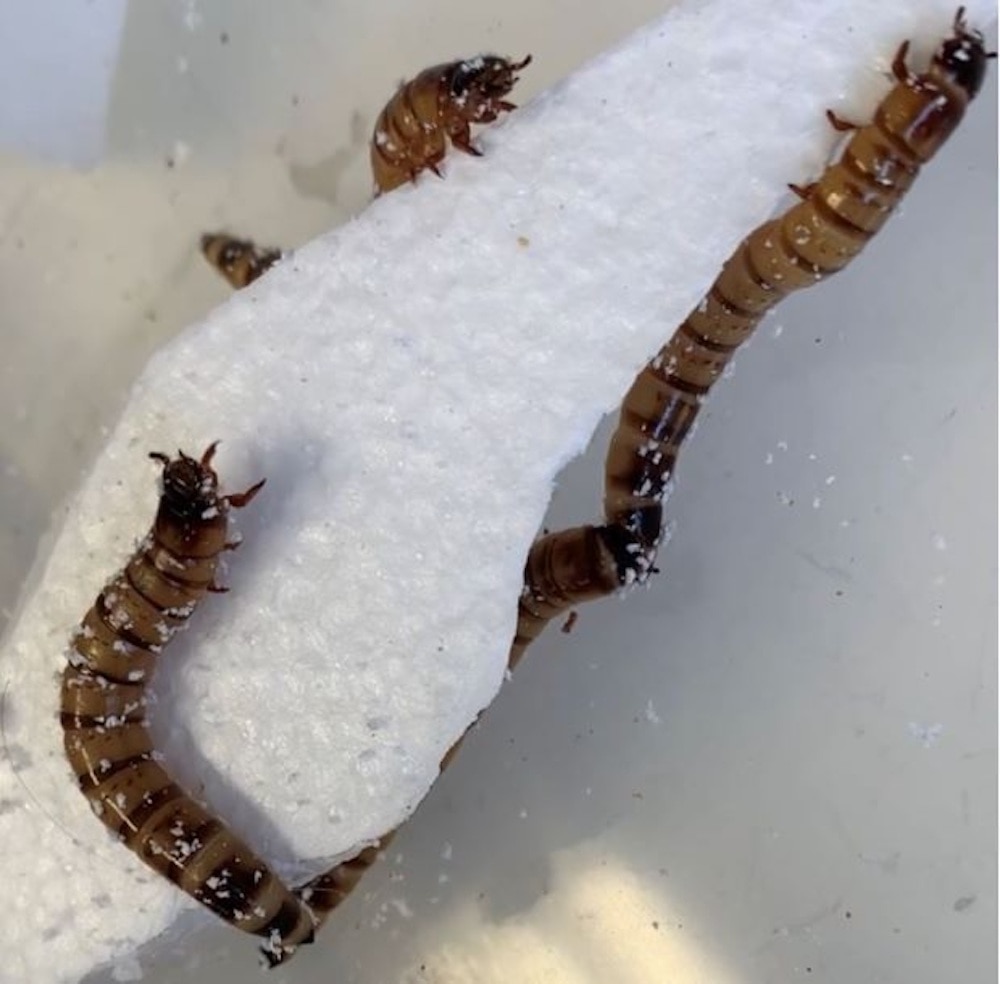Create a free profile to get unlimited access to exclusive videos, sweepstakes, and more!
These plastic-munching superworms are living recycling plants
Your decorative table fruit doesn't stand a chance.

The first worms you’re likely to encounter as a kid are the little wigglers which emerge from your yard and crawl along the sidewalk when it rains. When you hear the word worm, that’s likely what you imagine, but there are countless animals which are referred to by the same moniker, some of which are only distantly related. From terrifying parasites to marine worms with multiple butts, worms are truly legion. They’ve even inspired several science fiction franchises from Dune to Tremors, pitting humans against massive predatory worms from beneath the earth.
Worms, however, aren’t all bad. Some, like the Zophobas morio superworm, might use their ravenous appetites not to hunt humans, but to save us from ourselves. In a recent study published in the journal Microbial Genomics, Christian Rinke and colleagues from the Australian Centre for Ecogenomics at the University of Queensland studied the superworm and discovered a stunning ability to consume and degrade plastics.
While Zophobas morio is commonly referred to as the superworm, they are actually insect larvae which eventually metamorphose into a species of darkling beetle. Scientists were interested in them because of their moderately large size, incredible appetite, and impressive mouth parts.
“We knew they were eating machines. They eat as much as they can during their lifespan as larva. They’re also not very picky. They eat a lot of decayed material including plant leaves, decaying wood, and even animal carcasses. They’ll eat almost anything, so we thought there was a good chance they’d also eat something unnatural to them like polystyrene,” Rinke told SYFY WIRE.
To test the hypothesis, scientists placed superworms in an environment with foamed polystyrene — commonly known as Styrofoam — a material derived from plastic. The worms were deprived of any other resources so researchers could determine whether or not the worms would eat plastic and if they could be sustained by it.
“We could show that they survive on polystyrene, they gained a little weight, but it’s not a very nutritious diet as you might expect,” Rinke said.
While superworms would certainly prefer their usual diet of dead animals and plant matter, the research showed that they were able to digest and gain nourishment and energy from plastic materials. The secret to their success is two-fold, a combination of their shredding mouth parts and colonies of bacteria living in their guts.
“We looked into the microbes that are in the gut of the worms and found that several of them have encoded enzymes that are involved in polystyrene liquidation. The worm does the first part, shredding the polystyrene into smaller pieces, then feeds them to the microbes,” Rinke said.
Those enzymes further break down the plastic into biproducts that could potentially be used to upcycle the material into bioplastics or other materials. However, the process isn’t perfect. Researchers observed that after about 24 hours of munching on plastic, the worms’ feces changed from the typical brown to white. While the bacteria in their guts were degrading part of the plastic, other parts were coming out the other end.
That’s when things get a little grosser but more efficient. As previously mentioned, the worms aren’t choosy eaters, which means they often eat the feces of their companions. As a result, the plastic gets several trips through the superworm digestive system, continuing the breakdown process. When all is said and done, scientists were left with small pellets of partially degraded plastic. It’s not entirely clear at this point what components are present in the degraded plastic and whether or not it would need additional processing in order to be fully degraded. That question is the subject of continued research.
In the meantime, researchers are looking at ways to scale the process, borrowing from nature to develop more robust plastic recycling systems.
“It’s not impossible to have big worm farms. One idea would be to have a worm farm and add food waste along with plastic, which would make the diet a little more nutritious for the worms. To really scale it up, we want to characterize the enzymes and be able to produce them in the lab,” Rinke said.
The idea is to essentially build a giant version of the worms, mimicking the grinding motion of their mouths to break the plastic into smaller pieces before exposing those bits to the isolated enzymes. The team is also looking at ways to potentially engineer the enzymes and make them more efficient at breaking down plastics. That’s because these enzymes may have evolved to digest natural polymers and their ability to break down synthetic polymers is only a happy accident. Scientists hope they can pick up where nature left off and use these bacterial enzymes as a jumping off point for the creation of something even better.
Animals successfully eating plastic straddles the line between dystopia and hope, and now it’s our job to crawl toward a cleaner future, hand in proleg with our wormy friends.


























